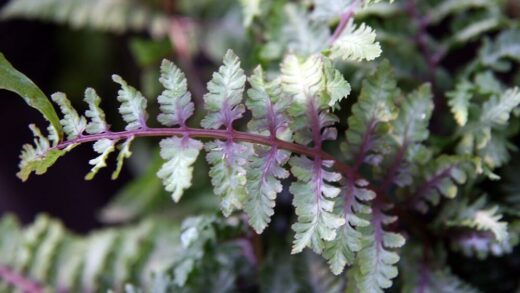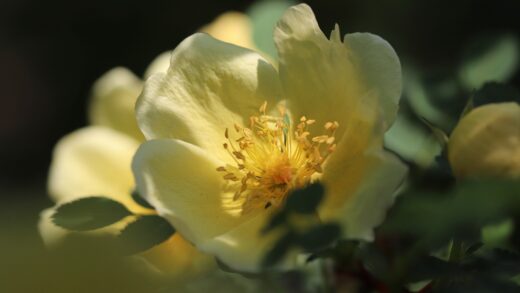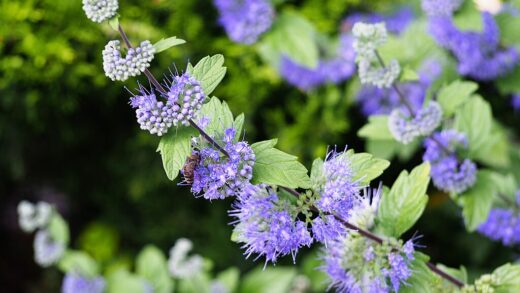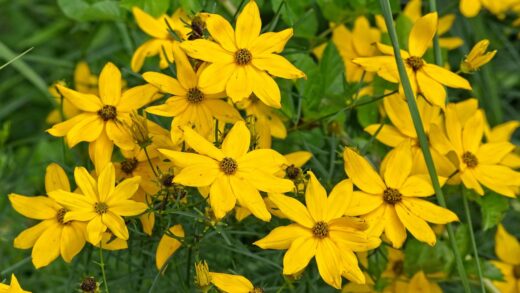The concept of pruning Jerusalem artichokes might seem unusual, as they are typically grown for their underground tubers rather than their above-ground structure. However, strategic pruning and cutting back can be highly beneficial management practices for this towering plant. The primary reasons for pruning are not to increase yield in the way one might prune a fruit tree, but rather to control the plant’s immense height, prevent wind damage, and manage its overall vigor. A timely cutback can make the patch more manageable, reduce the risk of the plants toppling over, and in some cases, encourage the plant to redirect its energy towards tuber development earlier in the season.
Jerusalem artichokes are known for their impressive stature, often reaching heights of two to three meters or more by mid-summer. This can be problematic in several ways. The tall stalks can cast unwanted shade on other parts of the garden, and their height makes them extremely vulnerable to being snapped or blown over by strong winds, especially during summer storms. A mid-season pruning, often referred to as “topping,” is a simple and effective way to mitigate these issues. By cutting the plants back, you create a shorter, sturdier, and more wind-resistant plant.
The timing of this pruning is crucial to its success. The ideal time to cut back the main stalks is in mid-summer, typically around the middle of July to early August, depending on your local climate and the plant’s development. At this stage, the plant has completed most of its vertical growth but has not yet begun to channel all of its energy into tuber formation. Pruning too early can stunt the plant’s overall development, while pruning too late, after flowering has begun, may interfere with the critical process of energy translocation to the tubers.
The practice of cutting back also extends to the end of the season. After the first hard frosts have killed the foliage and the plant has gone dormant, the dead and brittle stalks should be cut down to near ground level. This end-of-season cleanup is essential for tidying the garden, making it easier to access the patch for winter harvesting, and removing old plant material that could potentially harbor pests or diseases over the winter. This simple act of cutting back is a key part of the annual cycle of managing a healthy and productive Jerusalem artichoke patch.
The purpose of pruning
The primary purpose of pruning Jerusalem artichokes during the growing season is to manage their formidable height. A full-grown, unpruned plant can easily become a dominant and sometimes overwhelming feature in a garden. By strategically cutting them back, a gardener can maintain the plants at a more manageable size, typically between 1.5 and 2 meters. This makes the patch look tidier and prevents the plants from casting long shadows that could inhibit the growth of neighboring sun-loving crops. It is a proactive measure to keep the plant’s vigorous growth in check and integrate it more harmoniously into a mixed garden landscape.
A second, highly practical reason for pruning is to prevent wind damage. The tall, leaf-heavy stalks of the Jerusalem artichoke act like sails in the wind. A strong summer gust can easily snap the brittle stems or even uproot the entire plant. When a stalk breaks, the plant loses a significant portion of its photosynthetic capacity, which can negatively impact the final tuber yield. By topping the plants in mid-summer, you lower their center of gravity and reduce their wind resistance, creating a much shorter and more stable plant that is far less likely to be damaged during a storm.
Some horticultural theories suggest that pruning can also encourage the plant to focus its energy on tuber production. The logic is that by removing the growing tip of the main stem, you stop the plant from expending further energy on vertical growth and flower production. This hormonal shift is thought to signal the plant to redirect its resources downwards, potentially leading to the development of larger tubers. While anecdotal evidence from gardeners often supports this claim, the direct impact on yield can vary depending on the timing of the pruning and other growing conditions.
Finally, pruning can be a tool for aesthetic control and shaping. A dense stand of Jerusalem artichokes can be pruned to create a uniform hedge-like appearance, which can be used as a temporary summer screen for privacy or to hide an unsightly view. By consistently topping the plants at a desired height, you can transform what might be a chaotic-looking patch into a more deliberate and ornamental garden feature. This allows the gardener to take control of the plant’s form, balancing its utility as a food crop with its visual presence in the garden.
Techniques for reducing plant height
The most common and effective technique for reducing the height of Jerusalem artichoke plants is known as “topping” or “pinching back.” This process is straightforward and requires only a pair of clean, sharp pruning shears or loppers. The goal is to remove the top portion of the main stem. It is best to wait until the plant has reached a substantial height, typically at least 1.5 meters, before making the cut. This ensures the plant has already established a strong base and a good number of leaves for photosynthesis.
When you are ready to prune, identify the point on the main stem where you want to make the cut. A good rule of thumb is to cut the plant back to a height of about 1.5 meters, or to remove the top 30-50 centimeters of growth. Make a clean, straight cut just above a set of leaves. Cutting just above a leaf node will encourage the plant to send out side shoots from the axils of the leaves just below the cut. This will result in a bushier, multi-stemmed plant rather than a single, tall stalk, which can further enhance its stability.
It is important to perform this task with clean tools to prevent the introduction of diseases into the cut stem. Although Jerusalem artichokes are tough, a clean cut will heal more quickly and is less likely to become a site for fungal or bacterial infections. After making the cut, the removed top portion of the plant can be composted. This pruning should ideally be done on a dry, sunny day, which also helps the wound on the stem to dry and seal quickly.
For a large patch, this process can be done quite efficiently. You do not need to be overly precise with each individual plant. Simply work your way through the patch, cutting all the plants back to a relatively uniform height. This single pruning event in mid-summer is usually sufficient for the rest of the season. The plant will stop its upward growth and will instead become bushier and more robust, having achieved the primary goal of creating a shorter, more wind-resistant plant.
Optimal timing for cutting back
The timing of the summer pruning is the most critical factor in achieving the desired results without negatively affecting the plant’s health or tuber yield. The ideal window for topping Jerusalem artichokes is during the middle of summer, generally from mid-July to early August in most temperate climates. At this point in the season, the plant has typically reached or is approaching its maximum height, but it has not yet begun the main phase of flowering and tuber development. Pruning during this window effectively halts vertical growth at a manageable height.
Pruning too early in the season, for instance in June when the plants are still in a phase of rapid growth, can be counterproductive. The plant’s hormonal drive for vertical growth is still very strong, and it may respond to an early pruning by simply sending up new vigorous shoots, defeating the purpose of the cutback and wasting the plant’s energy. It is better to allow the plant to achieve most of its natural height before intervening, letting it expend that initial burst of energy before you redirect its focus.
Conversely, pruning too late in the season can be detrimental to the harvest. The plant typically begins to flower in late summer or early autumn, which coincides with the period when it is actively transporting sugars from the leaves to the developing tubers. Cutting off a significant portion of the foliage at this late stage can disrupt this vital process, reducing the amount of energy available for tuber storage and potentially leading to a smaller yield. Therefore, it is best to complete any desired height-reduction pruning well before the flower buds become prominent.
The end-of-season cutback has its own specific timing. This should be done in late autumn, after the first hard frosts have killed the plants and the stalks and leaves have turned brown and brittle. There is no benefit to cutting them down while they are still green, as the leaves are still photosynthesizing and sending energy to the tubers. Waiting until the plant is fully dormant ensures that the maximum amount of energy has been stored underground. Cutting the dead stalks down to about 10-15 centimeters above the ground then prepares the patch for winter and makes it easy to locate the tubers for harvesting.
Impact on yield and flowering
The impact of mid-summer pruning on the final tuber yield is a topic of some debate among gardeners, but the general consensus is that if timed correctly, it is either neutral or slightly beneficial. When you top the plant before it flowers, you prevent it from expending a significant amount of energy on producing flowers and seeds. The theory is that this conserved energy is then redirected downwards to the developing tubers, potentially resulting in larger or denser tubers than would have been produced by an unpruned plant.
However, the practice of topping also involves removing a portion of the plant’s leaves, which are its primary photosynthetic engines. This means that for a period after pruning, the plant’s overall energy production is slightly reduced. This is why timing is so critical. By pruning in mid-summer, the plant has enough time to recover and produce new leaves on side shoots, compensating for the initial loss of foliage. If pruned too late, it may not have time to recover before the end of the growing season, which could lead to a reduced yield.
Pruning will almost certainly impact the plant’s flowering. By cutting off the top of the stem, you are often removing the terminal bud where the main flower cluster would have formed. While the plant may still produce some smaller flowers on the side shoots that develop after pruning, the overall floral display will be significantly reduced or eliminated entirely. For a gardener whose primary goal is to harvest the largest possible tubers, this is a desirable outcome, as flowering and seed production are an energy-intensive process that competes directly with tuber development.
If, however, you value the cheerful, sunflower-like blooms for their aesthetic appeal or for attracting pollinators to your garden, you may choose not to prune, or to prune less aggressively. You could opt to only prune the tallest plants in the center of the patch while leaving the outer ones to flower. Ultimately, the decision to prune involves a trade-off: you sacrifice the plant’s full height and its main floral display in exchange for a more manageable, wind-resistant plant and the potential for a slightly enhanced tuber harvest.
















